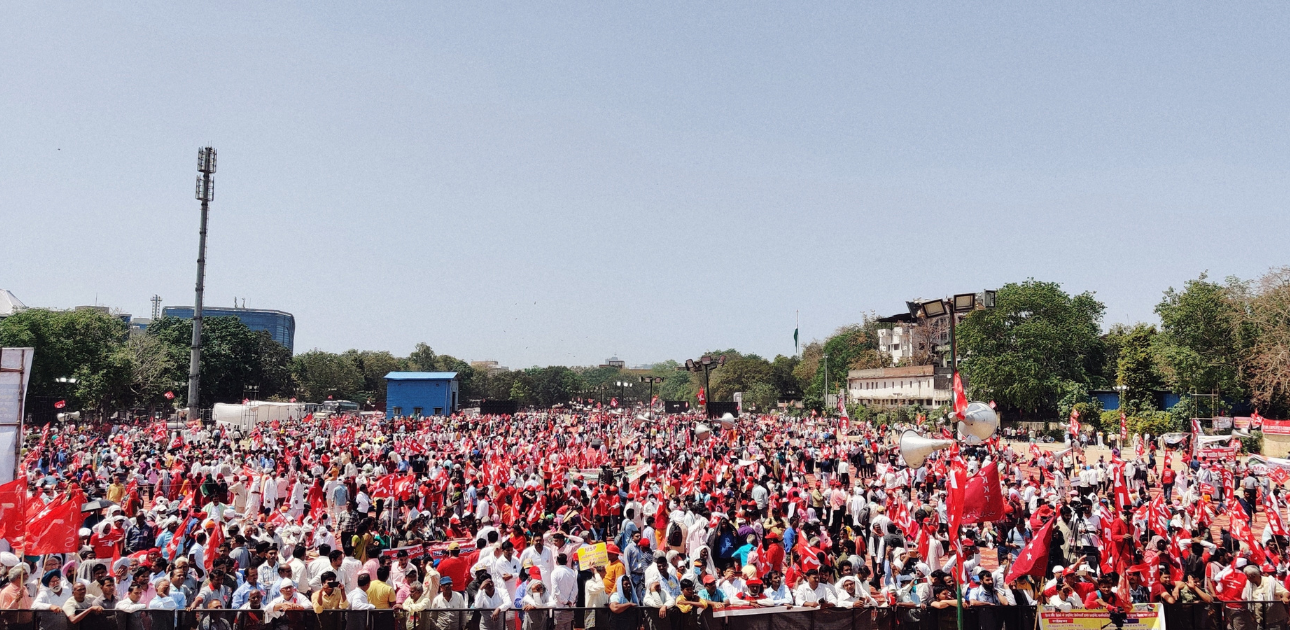Amidst a sea of red, workers and farmers unite to protest against what they see as an assault on their means of livelihood.
—
TENS of thousands of farmers and rural and industrial workers from distant parts of India reached the Ramlila Maidan in Delhi yesterday to participate in the Mazdoor–Kisan Sangharsh Rally to protest against policies that they see as an assault on their means of livelihood. Among their demands are an expansion of the Minimum Support Price (MSP) regime, a rollback of the four new Labour Codes, and a withdrawal of new measures imposed on Mahatma Gandhi National Rural Employment Guarantee Act, 2005 (MGNREGA) workers.
The rally was called by the Centre of Indian Trade Unions, which is one of India’s major trade unions, the All India Kisan Sabha, which is the largest peasant organisation of India, and the All India Agriculture Workers Union, which is the largest organisation of rural labour in India. Speakers at the rally asserted that the congregation should be seen as an indication of the surging anger of the working people and a ‘warning’ to the Bharatiya Janata Party (BJP), which currently heads the Union government, before the 2024 Lok Sabha elections.
“Enthused by the success of the year-long farmers’ struggle and of the many recent victories against anti-people policies, people had made their way to Delhi from far and wide,” a press statement issued by the three organising unions said. “A six month-long campaign in urban and rural districts of the country to mobilise people culminated in this massive assembly.”
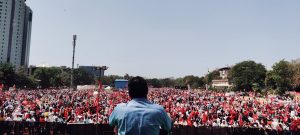

People came in droves in trains and buses from Haryana, Punjab, Rajasthan, Uttar Pradesh, Himachal Pradesh, Jammu and Kashmir, Maharashtra, Andhra Pradesh, Telangana, Kerala, Karnataka, Tamil Nadu, Madhya Pradesh, Bengal, Odisha, Assam, Tripura, Manipur, Chhattisgarh, Goa and Gujarat.
A host of grievances
Shanu, a mid-day meal worker from Jhajjar, Haryana said, “Our job is to feed kids at schools. It has been six months since we got our pay. Because we have come here today, we are being threatened with termination of services.”
A group of Accredited Social Health Activist (ASHA) workers from Panipat, Haryana, all dressed in red clothes, were aggrieved by their low pay, and the recent instructions to undertake recordkeeping in both physical registers and online. “They have doubled our work. Our payment hasn’t increased in five years … we are paid ₹4,000 [per month], but they expect us to do work worth ₹40,000.”
Rural workers present at the rally lamented the decrease in the budget for MGNREGA for the present financial year, under which ₹60,000 crores have been allocated, a nearly 32 percent decline from the revised estimate of ₹89,400 crore for 2022–23. “Kaam hi nahi he aaj kal” (There is no work these days), said an MGNREGA worker from Tanda, Uttar Pradesh.
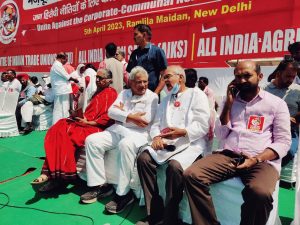

MGNREGA workers were also frustrated with the recently mandated system of capturing the attendance of workers through the National Mobile Monitoring System App, on which attendance is recorded twice per day, and photographic proof of the attendance has to be attached.
They also expressed their objection to the Union Ministry of Rural Development’s decision to mandatorily send all MGNREGA payments through the Aadhaar-based payment system, under which it has been made compulsory to link bank accounts with Aadhaar. “Jiska link nahi, usko payment nahi” (Anyone who doesn’t have their bank account linked with Aadhaar, does not receive MGNREGA payments), a worker from Alwar, Rajasthan said.
“This government has annoyed farmers a lot. They have increased the rates of manure and fertilisers. They have, in fact, crushed us with their apathy,” Satish Kumar from Uttarakhand said, adding that though the Union government had withdrawn the three farm laws, it was yet to guarantee MSP on all crops.
Meanwhile, industrial workers demanded that the Union government scrap its plan to implement the four new labour codes, which aim to replace existing statutes on factories, workplace safeguards, trade unions, and payment of wages, among other things. The four labour codes, which are yet to be operationalised are: the Code on Wages, 2019; the Industrial Relations Code, 2020; the Code on Social Security, 2020; and the Occupational Safety, Health and Working Conditions Code, 2020.
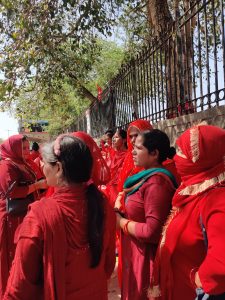

Workers fear that the ‘neo-liberal’ proposed codes reduce workplace safeguards, give arbitrary powers to employees to fire at will, do not rigorously define minimum wage rates, and aim to lower the bargaining power of trade unions.
As the rally started to disperse in the evening, this reporter approached a group of four men from Hisar, Haryana. While discussing the issues surrounding the 2020–21 farmers’ protest, one of them shifted the conversation to the portrayal of the protest in the media: “These days, even the electronic media often works like the ‘godi media’. The consumers of that media remain unaware. Workers or their unions themselves don’t have enough reach, so they don’t get heard.”
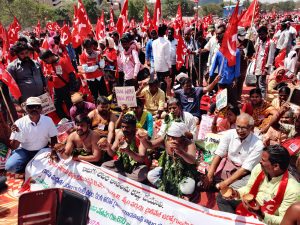

This reporter then asked how the group expected the rally to be covered by the media. Pat came the reply, “Dikhayenge hi nahi” (They won’t show it at all). Another then added, “Aur dikhayenge bhi to aate-jaate” (Even if they do, it will be only in passing).

